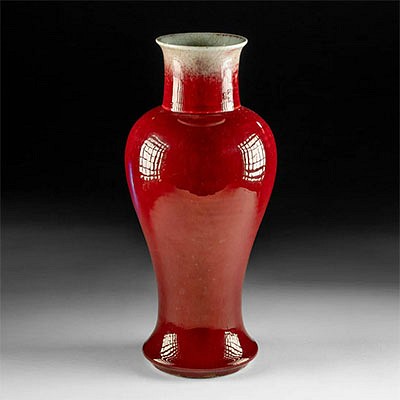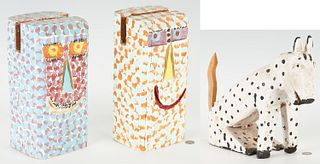2nd C. Gandharan Schist Buddha Torso Lotus Position
Lot 109
About Seller
Artemis Gallery
686 S Taylor Ave, Ste 106
Louisville, CO 80027
United States
Selling antiquities, ancient and ethnographic art online since 1993, Artemis Gallery specializes in Classical Antiquities (Egyptian, Greek, Roman, Near Eastern), Asian, Pre-Columbian, African / Tribal / Oceanographic art. Our extensive inventory includes pottery, stone, metal, wood, glass and textil...Read more
Estimate:
$2,400 - $3,600
Absentee vs Live bid
Two ways to bid:
- Leave a max absentee bid and the platform will bid on your behalf up to your maximum bid during the live auction.
- Bid live during the auction and your bids will be submitted real-time to the auctioneer.
Bid Increments
| Price | Bid Increment |
|---|---|
| $0 | $25 |
| $300 | $50 |
| $1,000 | $100 |
| $2,000 | $250 |
| $5,000 | $500 |
| $10,000 | $1,000 |
| $20,000 | $2,500 |
| $50,000 | $5,000 |
| $100,000 | $10,000 |
| $200,000 | $20,000 |
About Auction
By Artemis Gallery
May 11, 2023
Set Reminder
2023-05-11 10:00:00
2023-05-11 10:00:00
America/New_York
Bidsquare
Bidsquare : Fine Antiquities, Asian, Pre-Columbian, Ethnographic Art
https://www.bidsquare.com/auctions/artemis-gallery/fine-antiquities-asian-pre-columbian-ethnographic-art-12771
Classical antiquities, ancient and ethnographic art from cultures encompassing the globe. Artemis Gallery info@artemisgallery.com
Classical antiquities, ancient and ethnographic art from cultures encompassing the globe. Artemis Gallery info@artemisgallery.com
- Lot Description
**Originally Listed At $1200**
Central Asia, Pakistan and Afghanistan, Gandharan Empire, ca. 2nd to 3rd century CE. A depiction of Buddha torso sitting in lotus position, hand-carved from grey schist in high relief. The ancient deity sits with his hands in the Abhaya Mudra, the gesture dispelling fear and signaling protection with fingers extended and held together as the hand points upwards. His slender body is clothed in carefully sculpted, flowing robes - the naturalistic folds and creases -note the fine attention to drapery; a classical stylistic quality inherited from Alexander the Great's conquest of Gandhara in 330 BCE. The flat verso suggests this figure was tucked into a wall niche of a shrine or temple. Size: 2.75" L x 8.75" W x 8.25" H (7 cm x 22.2 cm x 21 cm)
The Gandharan Empire made itself wealthy in part by controlling lucrative trade along the mountain passes between China in the East and the Near East and Mediterranean in the West; a great deal of this wealth went into local patronage of artisans and art. In the first century CE, Buddhism became fashionable amongst Gandharan elites, and the art produced at this time depicting the Buddha includes some of the most striking Buddhist images from the past. Their artistic tradition also reflects the conquest of Alexander the Great and the introduction of styles from all sides, blended into a uniquely Gandharan tradition. Alexander the Great conquered Gandhara in 330 BCE and with the help of the Indo-Greek kings introduced classical traditions that would influence Gandharan art for the following seven centuries.
Provenance: East Coast collection, New York Gallery, New York City, New York, USA, acquired before 2010
All items legal to buy/sell under U.S. Statute covering cultural patrimony Code 2600, CHAPTER 14, and are guaranteed to be as described or your money back.
A Certificate of Authenticity will accompany all winning bids.
We ship worldwide and handle all shipping in-house for your convenience.
#177284Fragment of a larger piece as shown with old losses. Missing head and left hand and right fingers. Great remaining details and light mineral deposits.Condition
- Shipping Info
-
All shipping is handled in-house for your convenience. Your invoice from Artemis Gallery will include shipping calculation instructions. If in doubt, please inquire BEFORE bidding for estimated shipping costs for individual items. In most cases Artemis Gallery cannot ship to Australia and Germany, please inquire before bidding.
-
- Buyer's Premium



 EUR
EUR CAD
CAD AUD
AUD GBP
GBP MXN
MXN HKD
HKD CNY
CNY MYR
MYR SEK
SEK SGD
SGD CHF
CHF THB
THB














